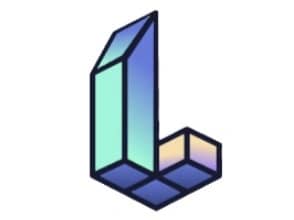위키 구독하기
Share wiki
Bookmark
Lunos
Lunos
Lunos는 Web3 생태계의 위험 관리를 자동화하는 분산형 보상 프로토콜입니다. 스마트 계약과 AVS 기반 자동화를 사용하여 DeFi 자산 보안 및 새로운 블록체인 위협과 같은 위험을 해결합니다. AI 기반 메커니즘을 통해 빠른 청구 처리가 가능하며, 진화하는 위험에 적응하고 중개자 없이 다양한 Web3 애플리케이션과 통합됩니다. [2]
개요
Lunos는 Web3 전반의 청구 처리 자동화 및 보안 강화를 위해 설계된 온체인 위험 보호 플랫폼입니다. 자율 검증 서비스(AVS)와 AI 기반 위험 평가를 활용하여 실시간 모니터링, 자동 지급 및 분산형 청구 검증을 제공함으로써 기존 보상 모델의 비효율성을 해결합니다. 블록 알림과 같은 사전 예방적 보안 조치를 자동 보상과 통합하여 Lunos는 DeFi 프로토콜, 스테이블코인 및 스테이킹 검증자가 위험이 악화되기 전에 위험을 완화할 수 있도록 합니다. EigenLayer의 분산형 인프라를 기반으로 구축되어 거버넌스 지연 및 인적 편향을 제거하여 Web3 생태계에 대한 원활하고 신뢰할 수 있는 보호를 보장합니다. [10]
기술 아키텍처
RWA 위험 관리
Lunos는 분산화를 유지하면서 청구 처리를 자동화하고 개선하기 위해 EigenLayer의 적극적으로 검증된 서비스(AVS) 프레임워크를 사용하는 AI 기반 청구 평가 모델을 개발하고 있습니다. AVS는 신뢰할 수 없는 검증을 가능하게 하여 비효율성과 지연을 줄입니다. 이 시스템은 인적 편향 없이 투명하고 안전한 평가를 보장함으로써 위험 관리를 향상시킵니다. 혁신과 함께 확장되는 광범위한 Web3 생태계와 통합됩니다. Lunos 프로토콜 내에서 AVS는 자동 청구 검증을 용이하게 하고, 위험 평가 프레임워크를 강화하며, 생태계 통합을 확장합니다. 또한 AI Sentry 노드를 통해 zkSYS 확장성을 지원하고 실제 및 온체인 보험 요구 사항에 대한 검증 기회를 재스테이커에게 제공합니다. [3]
AI 에이전트
Lunos의 AI 에이전트는 분산 시스템 내에서 청구 평가를 자동화합니다. AVS 운영자에 통합되어 투명성과 보안을 위해 블록체인 프로토콜과 연결된 상태로 오프체인에서 청구를 처리합니다. 청구가 제출되면 AI는 온체인 이벤트, 외부 소스 및 사용자 입력에서 데이터를 수집합니다. 기록 데이터, 정책 규칙 및 위험 요소를 기반으로 청구를 평가하여 유효성 점수와 결정 결과를 생성하기 위해 기계 학습과 자연어 처리를 사용합니다. 평가는 암호화 증명을 통해 검증되고 여러 독립적인 운영자에 의해 확인된 후 온체인에 기록됩니다. 이 시스템은 분산화와 보안을 유지하면서 온체인 보험 청구의 효율성을 높입니다. [4]
UNO
UNO는 Lunos 플랫폼의 네이티브 토큰으로, 최대 공급량은 384,649,206개입니다. 보험 구매, 청구 수령 및 위험 풀 투자와 관련된 거래 비용을 충당하는 데 사용됩니다. 이 토큰은 핵심 플랫폼 구성 요소이며 생태계 내에서 다양한 거래 및 상호 작용을 가능하게 합니다. UNO는 Ethereum (ERC-20) 및 Binance Smart Chain (BSC)에 배포된 멀티체인 자산으로 작동하여 접근성과 효율성을 극대화합니다. 이러한 이중 네트워크는 사용자가 BSC에서 더 낮은 거래 수수료를 활용하면서 Ethereum의 보안 및 유동성을 유지할 수 있도록 합니다. 이 토큰은 Lunos의 분산형 보상 생태계에 통합되어 스테이킹, 거버넌스 및 보상 구매를 허용합니다. [5] [9]
토큰 분배
- 보험 유동성: 36.32%
- 재무부: 44.31%
- 커뮤니티 인센티브 및 보상: 10.59%
- 팀: 8.78%
Lunos DAO
Lunos는 커뮤니티 구성원이 프로토콜 변경 사항을 제안하고 투표하는 분산형 거버넌스 모델로 전환하고 있습니다. 거버넌스 결정은 제품 목록, SSIP 풀 출시, 보상 조정, 매개변수 업데이트, 위원회 선거, 계약 업그레이드 및 재무 관리에 영향을 미칩니다. DAO의 실물 자산(RWA) 전략은 안전한 인프라와 사내 제품 개발에 중점을 둡니다. DeFi에 토큰화된 RWA를 통합하고 디페깅 및 스마트 계약 취약성과 같은 관련 위험을 해결합니다. Lunos는 자본 효율성을 개선하고 암호화폐 시장을 넘어 수익을 창출하기 위해 토큰화된 미국 국채를 포함한 RWA 제품을 출시할 계획입니다. 또한 DAO는 다른 DAO에 온체인 보상 및 보안 서비스를 제공하여 재무 관리를 최적화하는 것을 목표로 합니다. 수십억 달러 규모의 DAO 재무부를 통해 효과적인 활용은 Lunos와 파트너에게 상당한 가치를 창출할 수 있습니다. [6] [7]
올림푸스 위원회
올림푸스 위원회는 긴급 의사 결정을 담당하는 Lunos DAO 내의 부서입니다. 계약 업그레이드와 같은 주요 기능에 대한 권한을 가지고 있으며 프로토콜에 대한 다중 서명 제어 권한을 보유합니다. 분산화를 유지하기 위해 위원회 구성원은 거버넌스 에포크 동안 veUNO 보유자가 순차적으로 선출합니다. 선출된 구성원은 기여에 대한 보상으로 DAO 재무부에서 월별 보상을 받습니다. [6]
veUNO
veUNO는 Curve Finance에서 도입한 투표 에스크로우 모델을 기반으로 하는 Lunos의 거버넌스 토큰입니다. 사용자는 최대 4년 동안 UNO 토큰을 잠가 veUNO를 받으며, 잠금 기간이 길수록 투표 권한이 더 커집니다. veUNO 보유자는 SSIP 풀에 대한 보상 배출에 영향을 미쳐 프로토콜 전반의 유동성 분배에 영향을 미칩니다. 또한 SSIP 풀 추가 및 지급 능력 및 용량 비율 조정과 같은 거버넌스 결정에 투표합니다. veUNO 보유자는 플랫폼 수수료와 향상된 보상을 받지만 잠금 해제 날짜가 가까워짐에 따라 투표 권한이 감소합니다. [8]
잘못된 내용이 있나요?
